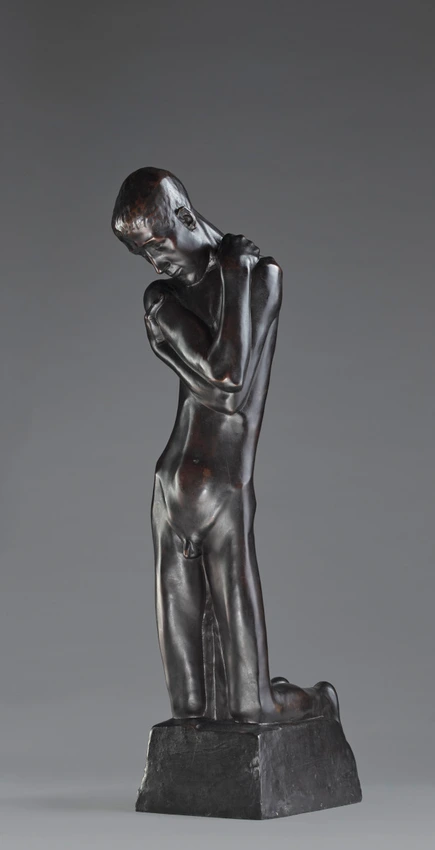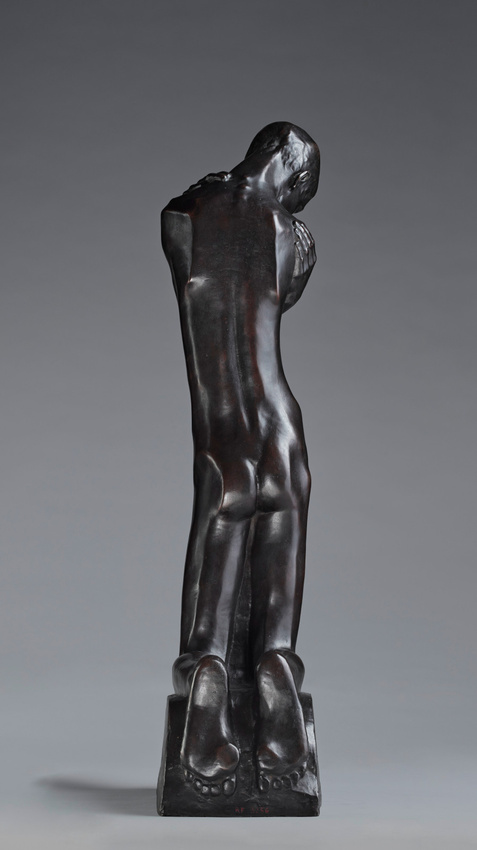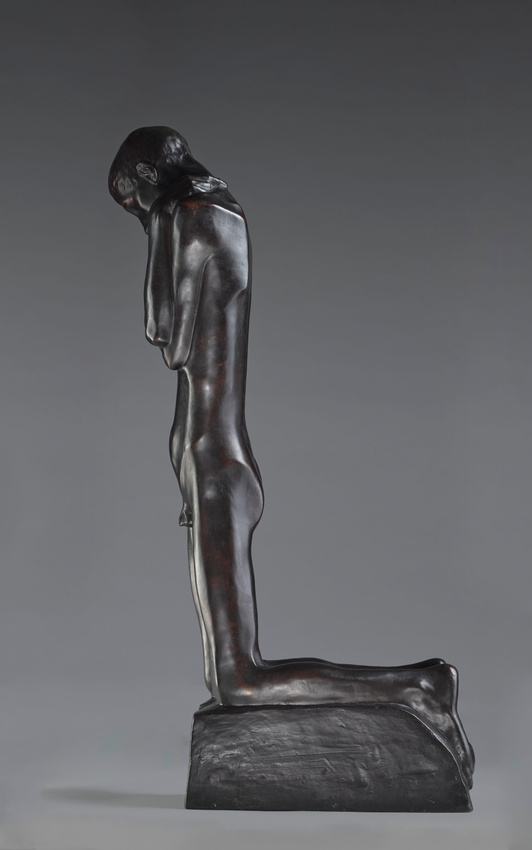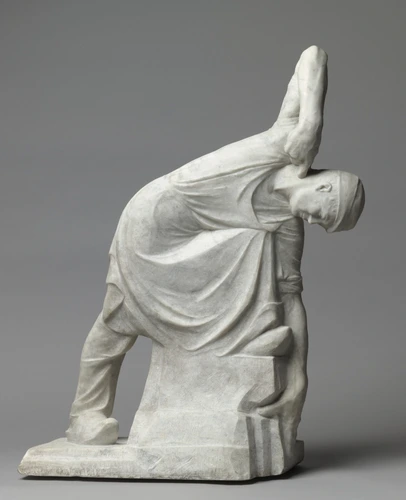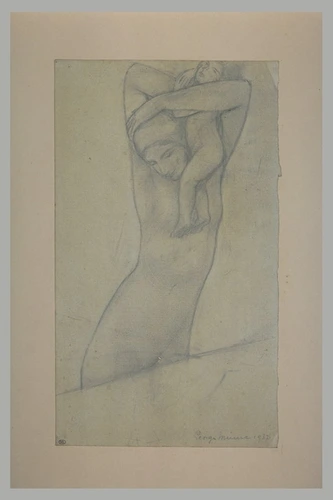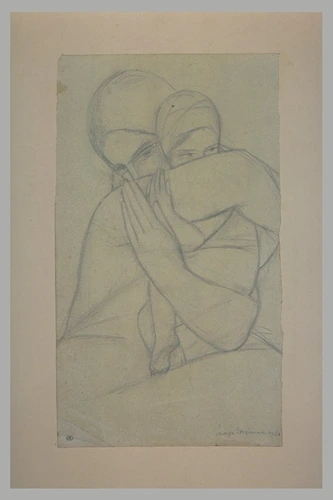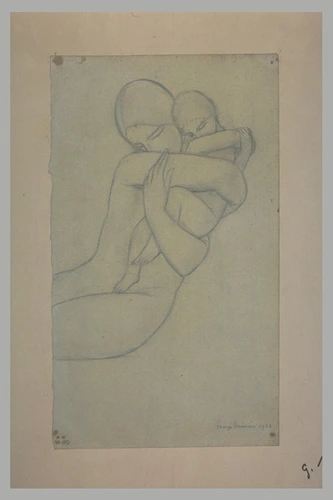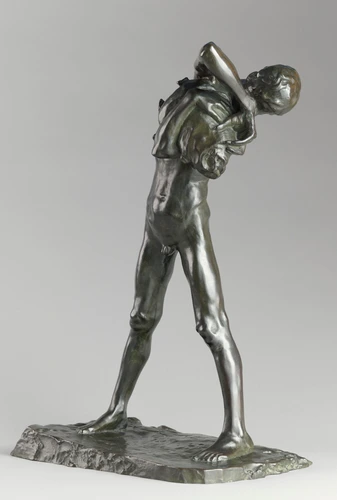Agenouillé à la fontaine
The concise, simplified style of his earliest creations earned the Belgian symbolist sculptor Georges Minne sharp criticism for his primitivism, gaucheness and rudimentary workmanship. His fellow countryman, the poet Emile Verhaeren, took his defence, pointing out that "his characters are almost beyond what is it is possible to be (...) they come and go towards other worlds where only the Idea can live." In Boy Kneeling at the Spring, 1898, Minne's search for sobriety led to an intransigent refusal of any anecdote: nothing visionary, no pathos, just slow, grave rhythm and inner silence.
In Georges Minne's idea of art, line predominates and the contours emphasise the solidity of the statue. The figure is absorbed in itself, lost in thought, grieving or resigned and painfully thin.
In Georges Minne's idea of art, line predominates and the contours emphasise the solidity of the statue. The figure is absorbed in itself, lost in thought, grieving or resigned and painfully thin.
The artist has looked for volumes that are imposing in their fullness. Constantly simplifying, he manages to give his figures true monumentality. The great writer Fierens-Gevaert believed that "his sculpture would not achieve its full expressive value until it was united with architecture." And indeed, in 1900 Minne produced a composition in which five copies of Boy Kneeling at the Spring were placed on the rim of a circular fountain. Borrowing Rodin's idea of repeating several identical figures, he amplified the statue's rhythmic, meditative force.
